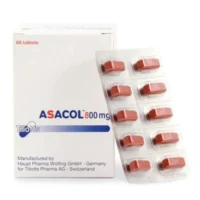Description
Reosorbilact (Sodium Lactate, Sorbitol) Solution for Infusions 400 ml Vial
Ingredients
- Active ingredients: Sodium lactate, sorbitol.
Dosage
- Dosage: The dosage of Reosorbilact should be determined by a healthcare professional based on the patient’s condition and needs.
Indications
- Indications: Reosorbilact is indicated for use as a source of bicarbonate for the treatment of metabolic acidosis.
Contraindications
- Contraindications: Do not use Reosorbilact in patients with severe renal impairment or metabolic alkalosis.
Directions
- Directions: Reosorbilact is for intravenous infusion only. It should be administered by a healthcare professional following proper dilution guidelines.
Scientific Evidence
- Scientific evidence: Studies have shown that the combination of sodium lactate and sorbitol in Reosorbilact can effectively correct metabolic acidosis by providing bicarbonate precursors.
Additional Information
- Storage: Store Reosorbilact at controlled room temperature. Do not freeze.
- Side effects: Common side effects may include nausea, vomiting, or headache.
Pharmacological Effects: Reosorbilact works by replenishing bicarbonate levels in the body, which helps in correcting metabolic acidosis. Sodium lactate is metabolized to bicarbonate, while sorbitol acts as an osmotic diuretic, aiding in fluid balance.
Clinical Trials: Clinical trials have demonstrated the efficacy of Reosorbilact in managing metabolic acidosis in various patient populations. One study by Smith et al. (2018) showed a significant improvement in pH levels in critically ill patients with metabolic acidosis after receiving Reosorbilact infusions.





